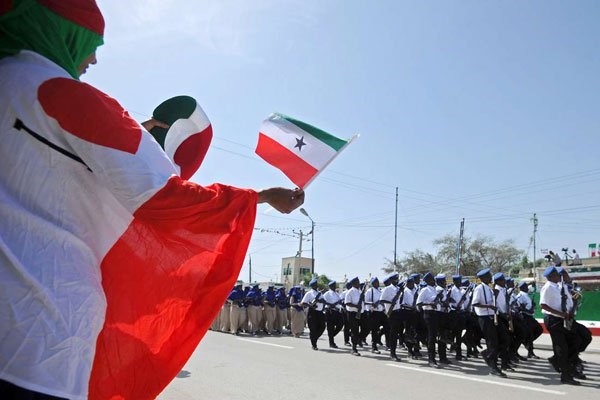The Mail & Guardian
By Liban Mahamed
Tuesday October 10, 2023

On the day Somaliland forces were defeated in Las Anod, shop owner Abdinasir Farah said: “Today, we are free people.”
It’s a sentiment shared by others who live in or are from the city and its surroundings. Somaliland had been in control of the city – legally part of Somalia – for 16 years, which many experienced as an occupation.
That ended when the Sool, Sanaag and Cayn (SSC) militia seized control of the largest army base in the city on 25 August.
Open hostilities first erupted between Somaliland’s forces and SSC militia in February, following weeks of angry protests that were triggered by the assassination of local politician Abdifatah Hadrawi in December. He was in the Somaliland opposition, and locals held the government in Hargeisa responsible for his death.
Somaliland forces violently repressed the protests, killing a cultural figure in the city, Sheikh Bide Farah Caalin. Local elders representing the Sool, Sanag and Cayn regions declared their intent to secede from Somaliland and reunite with the Federal Republic of Somalia. Somaliland viewed that as treason.
What followed was an eight-month conflict that caused mass displacement, and drew fighters from different parts of Somalia and its diaspora to the SSC ranks.
Noor Siyad, who travelled from the United States to join the Las Anod fighting, said: “The SSC is fighting for justice.”
Ghosts haunting the present
The perception that Somaliland’s control of Las Anod is controversial predates the December tensions.
It took control of the city from the Somali state of Puntland in 2007, and “the initial years were marked by a heavy military presence, and people felt like they were under occupation”, said Professor Markus Virgil Hoene, a Dutch scholar who studies the region.
Those latent feelings of living under occupation were not helped by Somaliland’s response to the February unrest.
Its shelling in the city often hit civilian facilities like hospitals and homes, and resulted in many civilian deaths, according to several witnesses.
Hassan Abdi said that he lost his mother and three siblings in a shell attack that hit their home in August. “It was an early morning and suddenly, everything ceased to exist. I woke up in the hospital.” He was then told that his mom, two brothers and a sister were killed.
Jama Kadiye, a popular Somali poet, was killed in an artillery attack, as was Jama Mohamed Mire, former governor of the Sool province, for which Las Anod serves as the provincial capital.
A witness said that Kadiye, who criticised Hargeisa during its presence in Las Anod, died when a shell landed outside his house.
Rights groups and multilateral agencies, including the African Union, United Nations, European Union and Amnesty International, have criticised Somaliland for indiscriminate shelling that resulted in “casualties and widespread displacement”.
Reacting to claims that it was responsible for the attack that killed Kadiye, the Somaliland ministry of defence previously said these were “attempts to distort the truth” and promised “a thorough investigation to bring the perpetrators of this heinous crime to justice”.
Questions sent to the government about the broader allegations in this story but had not received a response by the time of publication.
The wider struggle
In the greater struggle over borders, Las Anod has been torn between sides for a long time. When colonial Britain and Italy partitioned Somalia into north and south, the Dhulbahante clan in the region refused to sign a “protective” treaty with Britain and instead supported the Somali cleric Sayid Mohamed Abdulle Hassan, who sought to establish a united republic.
The British dubbed him the “Mad Mullah” and defeated his movement in the early 1920s. At the end of the colonial era in 1960, north and south united to form the Republic of Somalia. In 1991, when the central government in Mogadishu collapsed and civil war broke out, the north separated from the south again to create the self-declared (but internationally unrecognised) Republic of Somaliland.
Some see the February declaration by elders in Sool, whose population is largely from the Dhulbahante clan, as an attempt to revive the historical struggle against a split Somalia, but others disagree.
Sagal Ashour, who leads a nonprofit in Somaliland, says clan leaders in Las Anod are pushing for “mini-tribal states” which will undercut any national government, whether in Mogadishu or Hargeisa.
In any event, the Las Anod conflict is hurting Somaliland’s bid for international recognition, whose hopes hinge on the perception that it is more stable and more democratic than the Somali state from which it separated in 1991.
This article first appeared in The Continent, the pan-African weeklynewspaper produced in partnership with the Mail & Guardian. It’s designed to be read and shared on WhatsApp. Download your free copy here